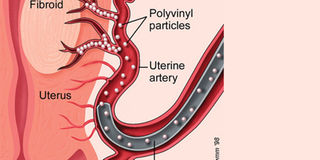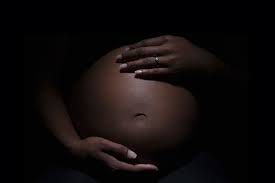Forget about surgery: New way to treat fibroids

A catheter is used to inject embolic agents into the blood vessel to block blood supply to the affected area. PHOTOs/net
What you need to know:
Uterine fibroids are benign (non-cancerous) tumors that grow in the uterus and cause multiple symptoms such as abdominal pain, frequent urination, backache, constipation, heavy menstrual bleeding, prolonged menstrual periods, infertility and swelling of the abdomen
Many women in the past have undergone surgery to remove fibroids because it was believed that it was the only available treatment option. Dr Hassan Kabiito, an interventional radiologist at International Hospital Kampala (IHK), says there is a new treatment; Uterine Fibroid Embolisation (UFE) that does not require one to undergo surgery.
Uterine fibroids are benign (non-cancerous) tumors that grow in the uterus and cause multiple symptoms such as abdominal pain, frequent urination, backache, constipation, heavy menstrual bleeding, prolonged menstrual periods, infertility and swelling of the abdomen.
“There is a new procedure called uterine fibroid embolization, which is an alternative to the commonly known surgery to remove fibroids (myomectomy). Embolisation means targeted cutting off of blood supply to a particular part of the body,” he explains.
How it is done
The doctor uses a small catheter to inject embolic agents into the blood vessel in the hand called radial artery or a blood vessel in the thigh known as the femoral artery. The medic then uses a special machine to monitor the catheters and wires, until they reach the blood vessel supplying the fibroids.
The goal is to block blood vessels supplying the fibroid. Once the blood supply is cut off, the fibroids shrink and disappear depending on their original size and number, causing a complete dissolution of the symptoms.
Myths about this treatment
According to Dr Kabiito, many patients believe surgery is the only treatment option of resolving fibroids. “We now have a purely non-surgical procedure, minimally invasive with faster recovery. If you have symptomatic fibroids, this procedure is a viable option,” he adds.
Some people think that with UFE, one cannot have children. He adds: “The procedure is used selectively in such a way that during treatment, only the blood supply to the fibroids and not the uterus is cut off.
The scans we have conducted with patients show a normal uterine tissue. With a dead fibroids, a woman can still conceive and have children, provided there are no other hindering factors.”
This type of treatment, he says, treats all sizes and numbers of fibroids because it is targeted therapy.
Dr Kabiito says the success rate for this treatment is about 98 per cent, leaving a small percentage of women whose fibroids cannot be killed with UFE. “In the vast majority of patients, this procedure suffices and you will not need the surgery. But due to additional blood supply from the ovarian arteries, in addition to the uterine artery, a negligible percentage of patients with fibroids may not heal,” he explains.
Asked if the fibroids would reoccur, Dr Kabiito says, “New fibroids can grow, but the treated ones are dead and cannot reoccur because they cannot access blood, an environment in which they thrive.”
Since treatment is individual-based, one needs to discuss the benefits and risks of uterine artery embolisation with the obstetrician-gynecologist or interventional radiologist.
A woman who has had an embolisation procedure can successfully carry a pregnancy up to term. Dr Kabiito, however, warns women to avoid UFE if they are pregnant because it increases the risk of abnormal placentation, low or very low birth weights, and preterm deliveries following the procedure.
The procedure
Uterine fibroid embolisation is usually performed by an interventional radiologist or a specialist in obstetrics and gynaecology, who has training in uterine artery embolisation.
In the radiology procedure room, you will have an intravenous (IV) line placed in one of your veins to give you fluids, anesthetics, antibiotics and pain medication.
He says: “The anesthesia reduces pain and helps you relax, but leaves you awake (conscious sedation). Thereafter, the doctor makes a small incision on the skin over your femoral artery on the thigh and inserts a catheter into the artery through one incision.”
To see your uterus and blood vessels, the radiologist uses a fluoroscope that produces moving images of internal structures and displays them on a computer monitor.
With this, the radiologist identifies the right area of the uterine artery that supplies blood to the fibroids and then injects the blood vessel with embolic agents.
After the procedure, the doctor checks additional images to ensure blood is no longer reaching the fibroids. Uterine fibroid embolisation typically provides significant relief of symptoms of uterine fibroids.
“Your menstrual period may continue on its normal schedule and if they are heavy, they will normalise. The fibroids shrink and are tracked on serial scans upon review. The length of time it takes for the fibroids to shrink depends on their size,” Dr Kabiito assures.




